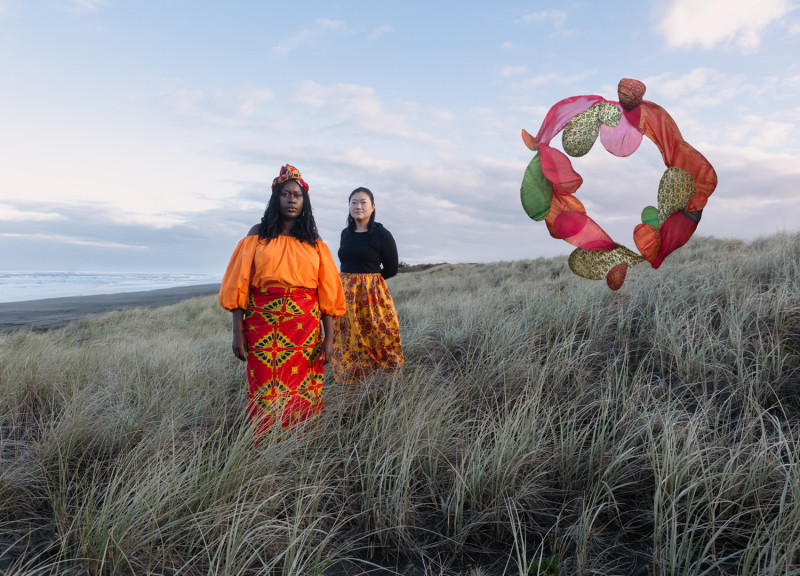
The Portal by Abhi Chinniah
A Migrant’s Path by Alessia Belsito-Riera
A Migrant’s Path is a visual celebration of cultural diversity. The New Zealand Portrait Gallery Te Pūkenga Whakaata exhibition crafted by self-taught photographer Abhi Chinniah gives both voice and agency to Aotearoa’s migrant communities by reflecting on personal experiences and broader social issues. Comprising 13 nuanced narratives through a tapestry of media, A Migrant’s Path will take visitors on a journey through the diverse and intricate experiences of migrant, immigrant, and refugee communities in Aotearoa until the 8th of December.
“This collection spans nine years of my photographic work, capturing real stories, life experiences, and the impact of generational displacement and trauma,” Chinniah says. Her work often explores questions around moving away from one’s roots – how to keep cultural practices, traditions, and beliefs alive; how to pass these elements down; and how traditions change over generations.
What are some of the challenges and triumphs migrants face, as highlighted in the exhibition?
Much of my work has been shaped through the lens of colourism, and this flows into many of the portrait sitters’ stories. The colour of one's skin often intertwines with their migration journey and personal experiences, so you can expect to read stories that reflect that connection. Through this lens, I explore the challenges of fitting in, shifting cultural identity, and conforming to the model minority trope – experiences that, for many, have involved feeling silenced in the face of adversity, unable to speak up about issues like mental illness. These stories are not complaints. When we move to different places, even generations later, some of us are still figuring out where we belong. For me, it is important that we create spaces to talk about these journeys.
What can we expect from the exhibition?
The audience will move from documentary-style photography to a sort of abstract realism, a different style of portraiture and storytelling but still very rooted and grounded in personal moments and stories. So, you will have the stories from the portrait sitters and also mine woven into the exhibition. All the photographs were photographed in New Zealand, mostly outdoors on the landscape of Aotearoa, because for me, being outdoors is grounding; it harnesses connection; there is something special in that – and that was why I started photographing outdoors, and years later it is always my first choice for my personal shoots.
What do you hope visitors take away?
The biggest takeaway is how these individual stories are layered, nuanced, personal, and unique. These are people, each with their own stories, brought together in one space. This is significant to me because it represents years of work coming together. Particularly when it comes to colourism, having so many stories side by side makes a powerful statement – almost a collective call to challenge this issue – expressed through my creative language of photography and storytelling. With music, video, stories, and, of course, portraits, this is an exhibition you’ll want to spend time with.
View more articles from:
« Issue 229, September 24, 2024

